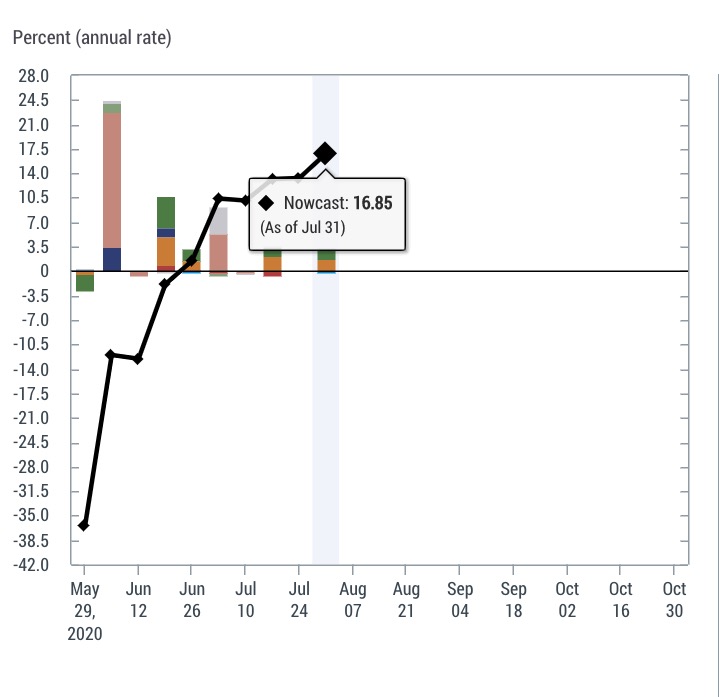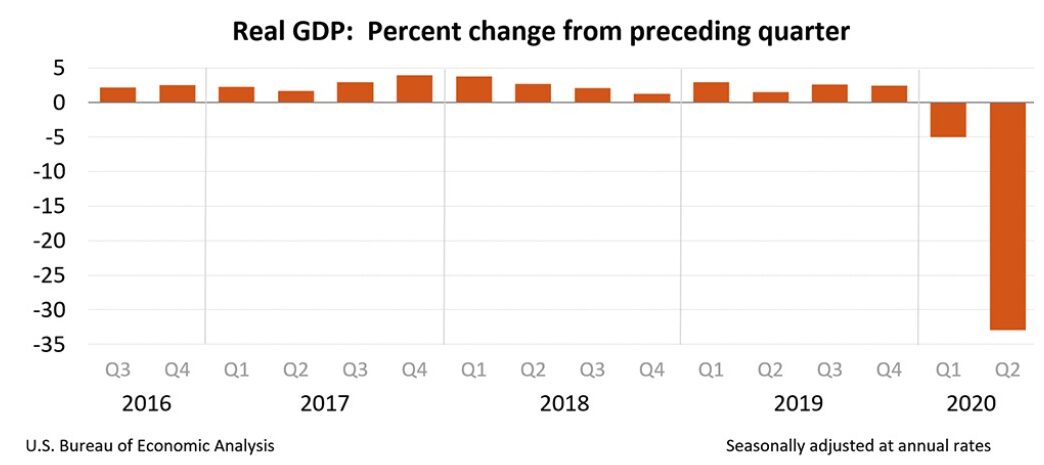New York Fed Nowcast Predicts GDP to Surge 16.8 Percent in Third Quarter
Near-real-time economic models at the Federal Reserve banks in New York and Atlanta predict Americas..
Near-real-time economic models at the Federal Reserve banks in New York and Atlanta predict Americas economy will experience surging, double-digit growth in the third quarter of this year, following a record-shattering collapse of minus 32.9 percent in the second quarter, when business activity ground to a halt due to the pandemic.
Called “nowcasts,” the predictions are model-based, running estimates of real GDP growth based on various data points and are neither an official forecast of the Atlanta Fed nor of the New York Fed. But the Atlanta Fed models latest estimate, called GDPNow and released on July 31, is for the economy to rebound by a seasonally-adjusted, annualized 11.9 percent in the third quarter.
The New York Federal Reserves nowcast model, which was similarly updated and announced on July 31, expects GDP to rebound by 16.8 percent in the third quarter.
 New York Fed Staff Nowcast estimate for Gross Domestic Product (GDP) in 2020:Q3, as of July 31, 2020. (New York Federal Reserve)
New York Fed Staff Nowcast estimate for Gross Domestic Product (GDP) in 2020:Q3, as of July 31, 2020. (New York Federal Reserve)Americas economy suffered a historic contraction in the second quarter of this year, with the Commerce Departments Thursday announcement showing that GDP plumbed depths more than three times lower the previous all-time drop of 10 percent in the second quarter of 1958.
“Markets were pretty much expecting a disastrous number, and they got it. The recovery is going to take time,” said Steven Ricchiuto, chief economist at Mizuho Securities USA.
Most of the drop in GDP took place in April, when business activity was put into deep freeze by lockdowns meant to curb the spread of the CCP (Chinese Communist Party) virus, also known as the novel coronavirus.

 U.S. gross domestic product (GDP), percent change from the preceding quarter, seasonally-adjusted, annualized. (Commerce Department)
U.S. gross domestic product (GDP), percent change from the preceding quarter, seasonally-adjusted, annualized. (Commerce Department)Many businesses resumed operations in May, fueling hopes for a quick rebound. But a resurgence of cases, especially in the densely populated South and West, along with weak job numbers, are tempering hopes for quick economic recovery.
The lackluster jobless claims report, released July 30, showed that initial weekly unemployment filings rose for the second straight week after steadily falling from its March peak of almost 7 million. For the week ending July 25, the number of Americans filing jobless claims was 1,434,000, Labor Department figures show (pdf). By comparison, the pre-pandemic peak in new weekly jobless claims in America was 695,000, dating back to 1982.
A relative bright spot in the jobless numbers is the figure for continuing claims, which reflect people who earlier filed an initial claim and now continue to receive unemployment benefits. While the number of workers continuing to collect unemployment spiked by 867,000 during the week ending July 18, about a million workers went off unemployment the week before, so the net number of workers on continuing claims is lower over a two-week period.
Also, the total number of people coRead More – Source

